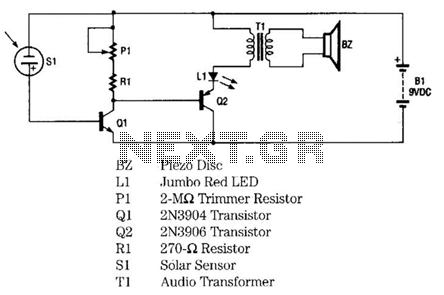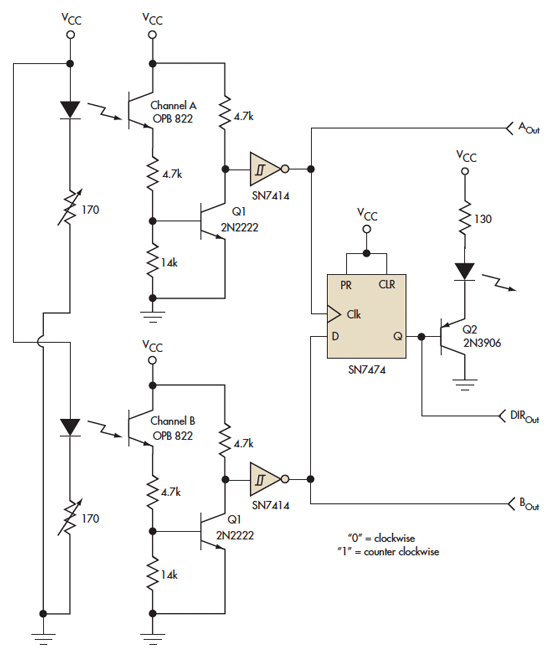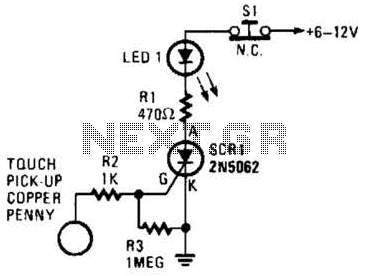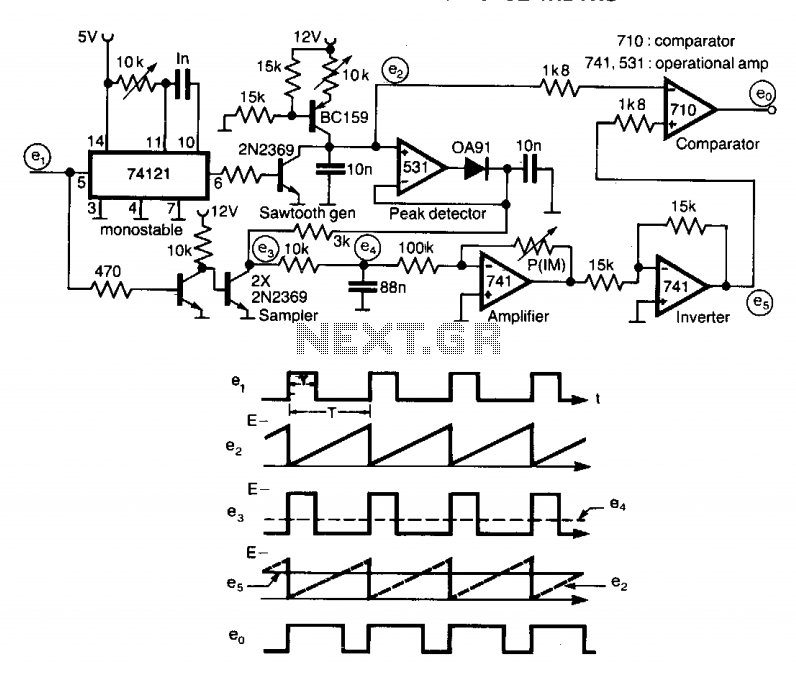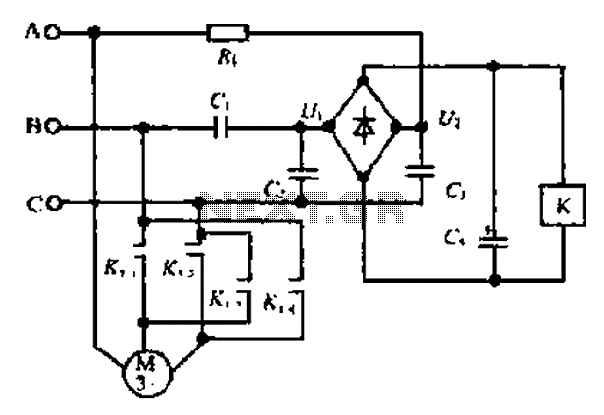
phone ringtone generator circuit
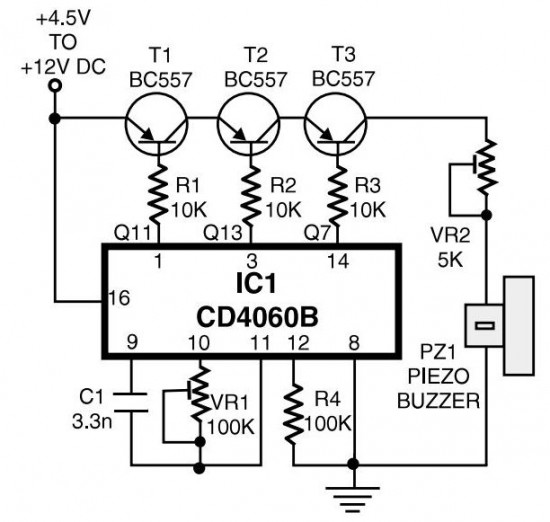
The circuit generates pulses of 1.25 Hz from pin 1 and 20 Hz from pin 14. The three output pins of IC1 are connected to the base terminals of transistors T1, T2, and T3 through resistors R1, R2, and R3, respectively. A built-in oscillator-type piezo buzzer produces a tone of approximately 1 kHz. In this circuit, the piezo buzzer is activated and deactivated at a frequency of 20 Hz by transistor T3. The collector of transistor T3 outputs 20 Hz pulses for a duration of 0.4 seconds. After this interval, the 20 Hz pulses are generated again for another 0.4 seconds, followed by a two-second silent interval. This pulse pattern continues to repeat automatically.
The described circuit utilizes an integrated circuit (IC1) to produce two distinct pulse frequencies: 1.25 Hz and 20 Hz. The output from pin 1 provides a low-frequency pulse signal, while pin 14 delivers a higher frequency pulse signal. The connection of the output pins to the base of transistors T1, T2, and T3 through resistors R1, R2, and R3 allows for the control of these transistors, which act as switches to modulate the piezo buzzer's operation.
The piezo buzzer, which is designed to operate at approximately 1 kHz, is integral to generating audible sound. Transistor T3 plays a crucial role in the modulation of the buzzer's sound output. By turning the buzzer on and off at a frequency of 20 Hz, a ringing tone is produced, which is characteristic of a typical ringtone. The operation of T3 allows for the creation of a pulse train where the buzzer is activated for 0.4 seconds, followed by a brief pause before reactivating for another 0.4 seconds. The subsequent two-second interval of silence provides a clear distinction between the sound pulses, enhancing the auditory recognition of the ringtone.
This circuit exemplifies the use of basic electronic components, including transistors and resistors, to create a functional sound-generating device. The automatic repetition of the pulse pattern ensures continuous operation, making it suitable for applications such as alert signals or notification tones in various electronic devices.At the same time, pulses obtainable from pin 1 will be of 1. 25 Hz and 20 Hz at pin 14. The three output pins of IC1 are connected to base terminals of transistors T1, T2, and T3 through resistors R1, R2, and R3, respectively. Working with a built-in oscillator-type piezobuzzer generates about 1kHz tone. In this particular circuit, the piezo-buzzer is turned on` and off` at 20 Hz for ring tone sound by transistor T3. 20Hz pulses are obtainable at the collector of transistor T3 for 0. 4-second duration. Just after a time interval of 0. 4 second, 20Hz pulses become again obtainable for another 0. 4-second duration. This is followed by two seconds of nosound interval. Thereafter the pulse pattern repeats by itself. 🔗 External reference
The described circuit utilizes an integrated circuit (IC1) to produce two distinct pulse frequencies: 1.25 Hz and 20 Hz. The output from pin 1 provides a low-frequency pulse signal, while pin 14 delivers a higher frequency pulse signal. The connection of the output pins to the base of transistors T1, T2, and T3 through resistors R1, R2, and R3 allows for the control of these transistors, which act as switches to modulate the piezo buzzer's operation.
The piezo buzzer, which is designed to operate at approximately 1 kHz, is integral to generating audible sound. Transistor T3 plays a crucial role in the modulation of the buzzer's sound output. By turning the buzzer on and off at a frequency of 20 Hz, a ringing tone is produced, which is characteristic of a typical ringtone. The operation of T3 allows for the creation of a pulse train where the buzzer is activated for 0.4 seconds, followed by a brief pause before reactivating for another 0.4 seconds. The subsequent two-second interval of silence provides a clear distinction between the sound pulses, enhancing the auditory recognition of the ringtone.
This circuit exemplifies the use of basic electronic components, including transistors and resistors, to create a functional sound-generating device. The automatic repetition of the pulse pattern ensures continuous operation, making it suitable for applications such as alert signals or notification tones in various electronic devices.At the same time, pulses obtainable from pin 1 will be of 1. 25 Hz and 20 Hz at pin 14. The three output pins of IC1 are connected to base terminals of transistors T1, T2, and T3 through resistors R1, R2, and R3, respectively. Working with a built-in oscillator-type piezobuzzer generates about 1kHz tone. In this particular circuit, the piezo-buzzer is turned on` and off` at 20 Hz for ring tone sound by transistor T3. 20Hz pulses are obtainable at the collector of transistor T3 for 0. 4-second duration. Just after a time interval of 0. 4 second, 20Hz pulses become again obtainable for another 0. 4-second duration. This is followed by two seconds of nosound interval. Thereafter the pulse pattern repeats by itself. 🔗 External reference
